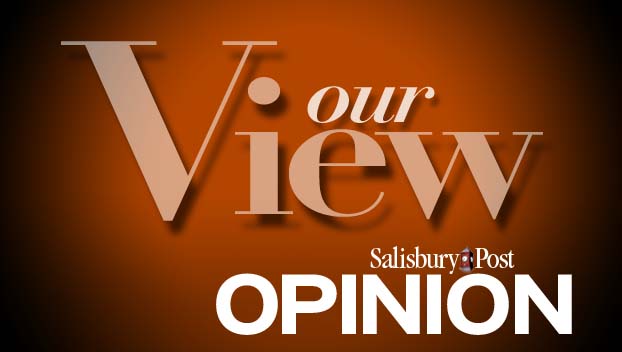Editorial: Easy precautions will prevent worst possibilities
Published 12:00 am Wednesday, November 18, 2020
In the early days of the COVID-19 pandemic, much of the country turned its attention to projections about total cases, hospitalizations and deaths and how those possibilities were affected by virus-related restrictions.
And while the models weren’t perfect, it’s worth revisiting one of them months later because the country has been able to learn a great deal about the way COVID-19 spreads and how people behave in response to virus-related restrictions. One frequently cited model was created by the Institute for Health Metrics and Evaluation, housed at the University of Washington. It was used by the White House for a time to gauge how the COVID-19 pandemic might turn out.
In April, the model projected there would be 2,537 deaths in North Carolina from COVID-19 by August 4, with its range of possibilities being as low as 1,287 and as high as 5,054. It turns out that, while its estimate was high, it didn’t miss entirely. On Aug. 4, there were 2,050 dead.
There were dire predictions, too, about hospital resources not being enough to meet the demand if no restrictions were put in place. The good news is that the worst possibilities haven’t come to pass because of restrictions like mask mandates. The institute currently projects about 60% mask-wearing compliance in North Carolina, basing that estimate on a range of surveys. That’s probably about right for Salisbury, too.
Its current projections hinge on virus-related restrictions and the degree to which people wear masks in the future. If things stay as is, the model projects 14,385 deaths by March 1. As a comparison, the state currently reports 4,852 COVID-19 deaths, requiring a significant surge of deadly cases to reach the projection. Universal mask-wearing decreases the projection by about 4,000. Easing mandates increase the projection by several thousand.
Infections are a similar story, with the peak of new daily positives, including those who are not tested, projected to reach nearly 20,000 around January — another projection that would require a major spike. Intensive care beds needed could exceed what’s available in December, but even the most dire projection for the total number of beds needed does not exceed what’s available in the state.
So how should we judge the projections? While nothing is certain about the future, except that coronavirus will remain an unwelcome guest in our lives, reality is probably somewhere lower than the projection and higher than the best-case scenario. That’s particularly true because more restrictions are likely to come if cases get out of control.
For the time being, Gov. Roy Cooper is stressing the importance of recommitting to existing rules such as mask wearing, social distancing and gathering limits. In a state already so divided by COVID-19, people are not likely to react kindly to a return to stay-at-home orders. And the state will face a tough task in ensuring equal enforcement by local law enforcement agencies across the state.
Salisbury and Rowan County should collectively look at projections as something to avoid and take easy precautions like wearing a mask, waiting 6 feet apart, washing your hands, avoiding indoor gatherings outside of your core family group and avoiding large gatherings entirely. Taking common precautions now can ensure we’ll all be able to look back at projections months in the future and note that they were too dire.


